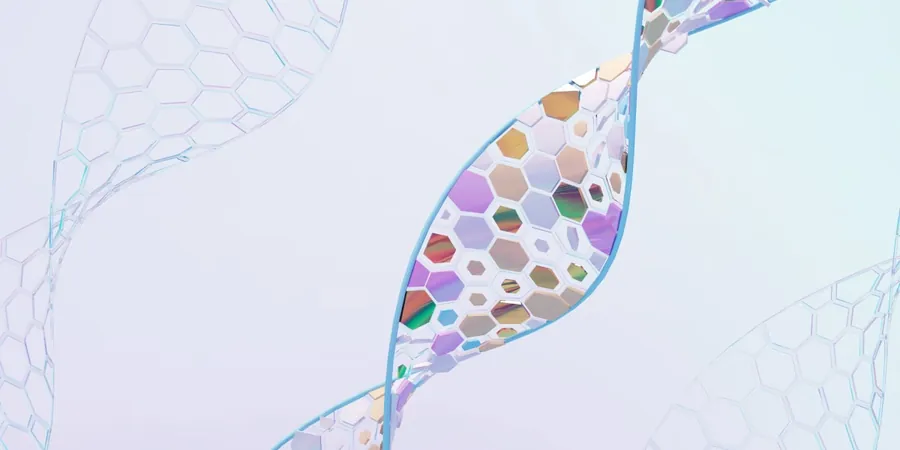
Unlocking Cancer's Secrets: New DNA Regulators Could Be the Key to Breakthrough Treatments
2025-04-10
Author: Wei
Imagine cramming six feet of DNA into a space no bigger than a speck of dust! This astounding feat occurs in every cell of the human body, where DNA isn't just randomly tangled—it’s meticulously folded into intricate loops. These structures don’t just look pretty; they play a vital role in determining which genes are turned on or off, influencing everything from cellular function to disease development.
In a groundbreaking study published in *Nature Methods*, researchers from Yale University have identified 21 key regulators of DNA structure, 19 of which are linked to various diseases, including cancer. The study marks a significant advancement in understanding how the 3D arrangement of our genetic material influences health.
The Science Behind DNA Folding: A New Frontier in Cancer Treatment
Dr. Siyuan (Steven) Wang, who led the research, emphasized the importance of these findings, stating, "Through our approach, we were able to create the first screening platform for regulators of multi-scale 3D genome organization." Each identified regulator presents a potential new target for drug development, particularly in treating diseases and even aiding in anti-aging therapies.
At the heart of this research lies the concept of chromatin—DNA wrapped around proteins—forming a dense fiber that can either activate or silence genes depending on its structure. Wang noted, "Genome structure controls many, if not all, genomic functions," underscoring its relevance to gene expression, cell division, and DNA repair.
State-of-the-Art Techniques: Changing the Game in Genetic Research
Wang and his team previously pioneered a 3D genomics technology, known as chromatin tracing, that uses fluorescent tags to visualize DNA's structure while it folds and unfolds. In their latest study, they enhanced this method by integrating it with pooled CRISPR screening and an innovative barcoding system called BARC-FISH, allowing for a comprehensive analysis of gene regulation.
This powerful toolkit enabled researchers to quickly and accurately test 137 different genes, with the potential to scale up to tenfold more, providing a more dynamic insight into how gene manipulation affects DNA structure.
Notable Discoveries: Genes with a Dual Role
Focusing on genes tied to cellular aging and those that produce proteins within the cell nucleus, the team uncovered fascinating revelations. Among the 21 newly identified regulatory genes, several were already known to be associated with diseases. For instance, the RB1 gene can lead to retinoblastoma while also serving as a chromatin regulator.
Perhaps most intriguing is the gene CHD7, recognized for its role in CHARGE syndrome—a condition that affects multiple organs. Previous studies identified it as a regulator that can both activate and compact chromatin, revealing a complex dual role in DNA manipulation.
Future Horizons: Could These Findings Transform Cancer Therapy?
Looking ahead, Dr. Wang and his colleagues are preparing to launch the first single-cell 3D genome atlas of cancer in mice, employing their cutting-edge chromatin tracing method. Preliminary findings on structural changes in lung and pancreatic cancer cells suggest that understanding these shifts could potentially offer new therapeutic routes.
"What if we reverse the 3D genome changes that occur in cancer? Would it lead to better outcomes?" Wang questions, hinting at a world of possibilities that could reshape cancer therapy.
This remarkable research effort, backing by prominent institutions like the National Institutes of Health, emphasizes the untapped potential of DNA architecture in decoding the complexities of cancer and other diseases. Get ready for a new era in medical science!

 Brasil (PT)
Brasil (PT)
 Canada (EN)
Canada (EN)
 Chile (ES)
Chile (ES)
 Česko (CS)
Česko (CS)
 대한민국 (KO)
대한민국 (KO)
 España (ES)
España (ES)
 France (FR)
France (FR)
 Hong Kong (EN)
Hong Kong (EN)
 Italia (IT)
Italia (IT)
 日本 (JA)
日本 (JA)
 Magyarország (HU)
Magyarország (HU)
 Norge (NO)
Norge (NO)
 Polska (PL)
Polska (PL)
 Schweiz (DE)
Schweiz (DE)
 Singapore (EN)
Singapore (EN)
 Sverige (SV)
Sverige (SV)
 Suomi (FI)
Suomi (FI)
 Türkiye (TR)
Türkiye (TR)
 الإمارات العربية المتحدة (AR)
الإمارات العربية المتحدة (AR)